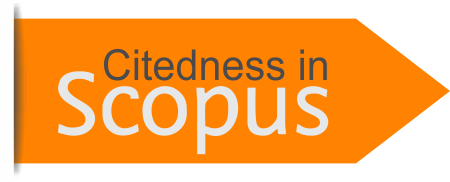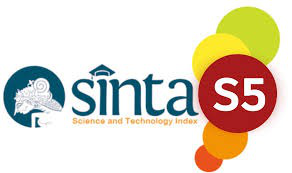Portfolio Optimization by Considering Return Predictions Using the ARIMA Method on Jakarta Islamic Index Sharia Stocks
Abstract
Full Text:
PDFReferences
Bessler, W., & Wolff, D. (2024). Portfolio Optimization with Sector Return Prediction Models. Journal of Risk and Financial Management, 17(6). https://doi.org/10.3390/jrfm17060254
Box, G. E. P., & Jenkins, G. M. (1976). Time Series Analysis: Forecasting and Control. Holden-Day.
Chen, Y. (2023). Application of ARIMA Model in Portfolio Optimization. Advances in Economics, Management and Political Sciences, 26(1), 227–236. https://doi.org/10.54254/2754-1169/26/20230575
Gubu, L., Cahyono, E., Arman, A., Budiman, H., & Djafar, M. K. (2024). Optimasi Portofolio Mean-Variance Dengan Analisis Klaster Fuzzy C-Means. Jurnal Gaussian, 12(4), 593–604. https://doi.org/10.14710/j.gauss.12.4.593-604
Mercurio, P. J., Wu, Y., & Xie, H. (2020). An entropy-based approach to portfolio optimization. Entropy, 22(3), 1–17. https://doi.org/10.3390/e22030332
Nur Fadhila, S., & Zuliana, S. U. (2023). Optimasi Portofolio Saham Menggunakan Model Markowitz Berdasarkan Prediksi Harga Saham. Kaunia: Integration and Interconnection Islam and Science Journal, 18(1), 35–40. https://doi.org/10.14421/kaunia.3948
Rahmi, A., & Helma. (2023). Portofolio Optimal Dengan Mempertimbangkan Prediksi Return Menggunakan Metode Support Vector Regression ( SVR ). 7(March), 23745–23753.
Saputra, M. R. (2023). Optimasi Portofolio Berbasis Prediksi Return Saham Menggunakan Hybrid XGBoost dan Improved Firefly Algorithm untuk Saham dalam Indeks LQ45. 10(3), 3505–3514.
Thomas, R. L. (1997). Modern Econometrics: An Introduction. Addison-Wesley.
Wei, W. W. S. (2006). Time Series Analysis: Univariate and Multivariate Methods (Edisi Kedua). Pearson Addison Wesley.
Wulan Sari, D., Goejantoro, R., & Wahyuningsih, S. (2016). Estimasi Parameter Model ARIMA untuk Peramalan Debit Air Sungai Menggunakan Least Square dan Goal Programming (Parameter Estimation of an ARIMA Model for River Flow Forecasting Using Least Square and Goal Programming). Jurnal EKSPONENSIAL, 7(2).
DOI: https://doi.org/10.46336/ijqrm.v6i2.1012
Refbacks
- There are currently no refbacks.
Copyright (c) 2025 Salwa Cendikia Millantika

This work is licensed under a Creative Commons Attribution 4.0 International License.
Published By:
IJQRM: Jalan Riung Ampuh No. 3, Riung Bandung, Kota Bandung 40295, Jawa Barat, Indonesia
IJQRM Indexed By:
 Creation is distributed below Lisensi Creative Commons Atribusi 4.0 Internasional.
Creation is distributed below Lisensi Creative Commons Atribusi 4.0 Internasional.








